Of the European car makers, Citroen has been through as many twists and turns over the years as just about any. And that’s reflected here in New Zealand too, where the brand is now under the wing of the same distributor as Peugeot. About time, given they are both small players here and are both part of the PSA group, which has now come under the Stellantis umbrella, a huge global player up with the likes of Toyota and VW.
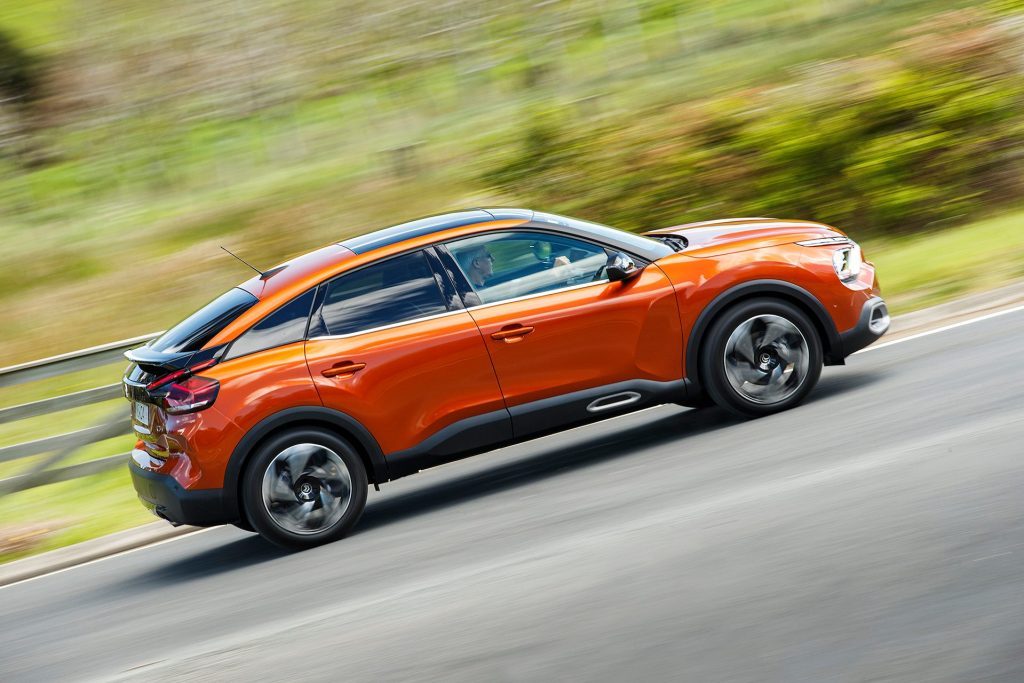
Anyhow, Citroen has been getting its act together on the heels of Peugeot which has been firing on all four in the European market for some time. That’s on the back of good design, and sensible cost cutting, with fewer platforms and more sharing of those within the wider group.
New C4 is an example of that, built not in France, as you might expect, but in a factory in Spain where 2008 is also made. They share the same compact car platform.
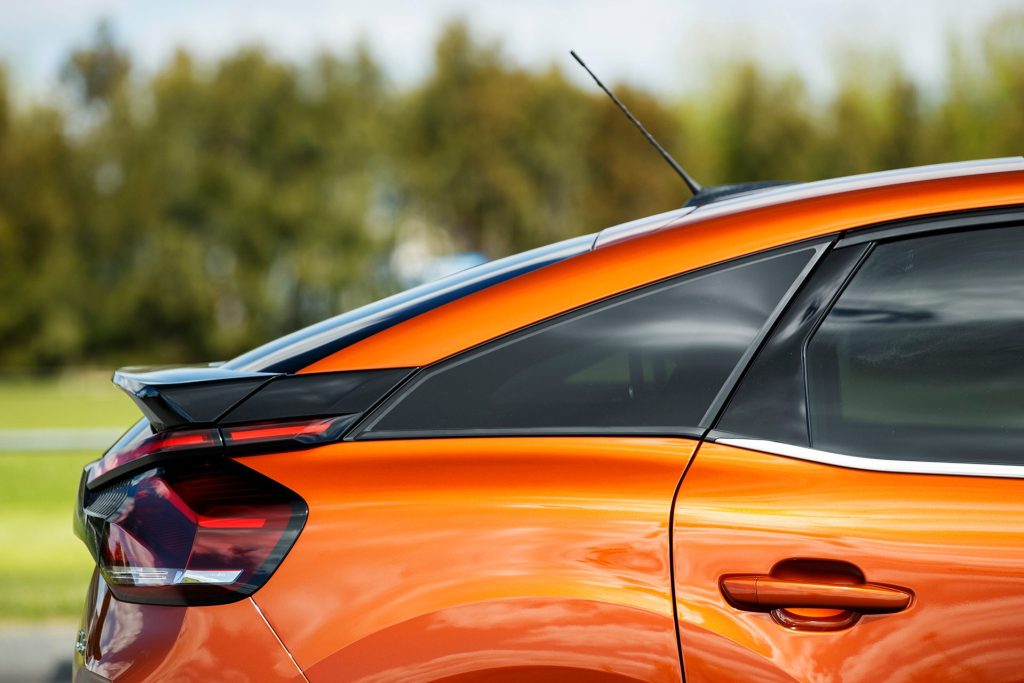
C4 has morphed a bit, from being a traditional hatchback to now looking (and driving as it happens) more like a crossover. At least, that’s how it presents on the outside where it has an SUV coupe body style, complete with black plastic cladding about the wheel arches, and looks to be raised slightly, or perhaps that’s just because of the big wheels and high profile rubber it’s wearing.
Inside, it’s more the traditional hatch, though with a few differences. The gear lever is now just a stubby little thing, a shift-by-wire device, and there’s also a unique feature in the tablet presenter. This you retrieve from the glove compartment, attach to slots in the dash and then your tablet is inserted within the rubber holder, which gives the front seat passenger a sense of purpose, like navigating. But wait, why bother when this has nav anyway? Perhaps they can be quiz master on the trip instead. It’s a nice addition, though how much use it gets is anyone’s guess.
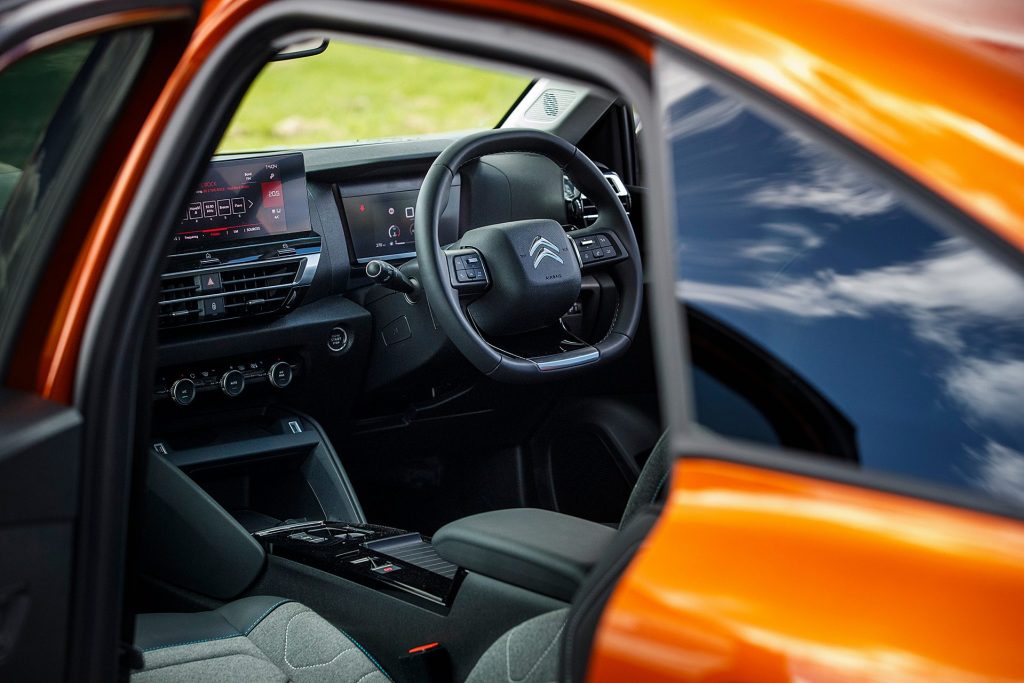
One other item that rates a special mention is the central self-locking and unlocking mechanism, a function you can disable or enable as desired. As you approach the car it automatically unlocks, and as you leave it beep-beeps you a roadrunner-like au revoir as it locks itself. Why is it that a $40k car can have this and most luxury vehicles you still have to touch some pad to achieve the same thing, exiting or arriving? So that’s another rather smart and ingenious feature that endears you to your drive.
And on terms of endearment, this new C4 is quite the looker. It carries the new face of Citroen, the chevrons extending into the DRL light cluster while LED headlamps sport a new shape. It’s a bit busier than the previous iteration but more modern as well. Round the back, each taillight houses a couple of red slashes for the brake lights, and a small spoiler bisects the rear window, not interfering with visibility overly. In profile, it has a fastback appearance, vestiges of the airbumps present as styling details. This is really a smart looking machine, especially with its big alloys. And appearance plays a major role in a sale, just like with a house.
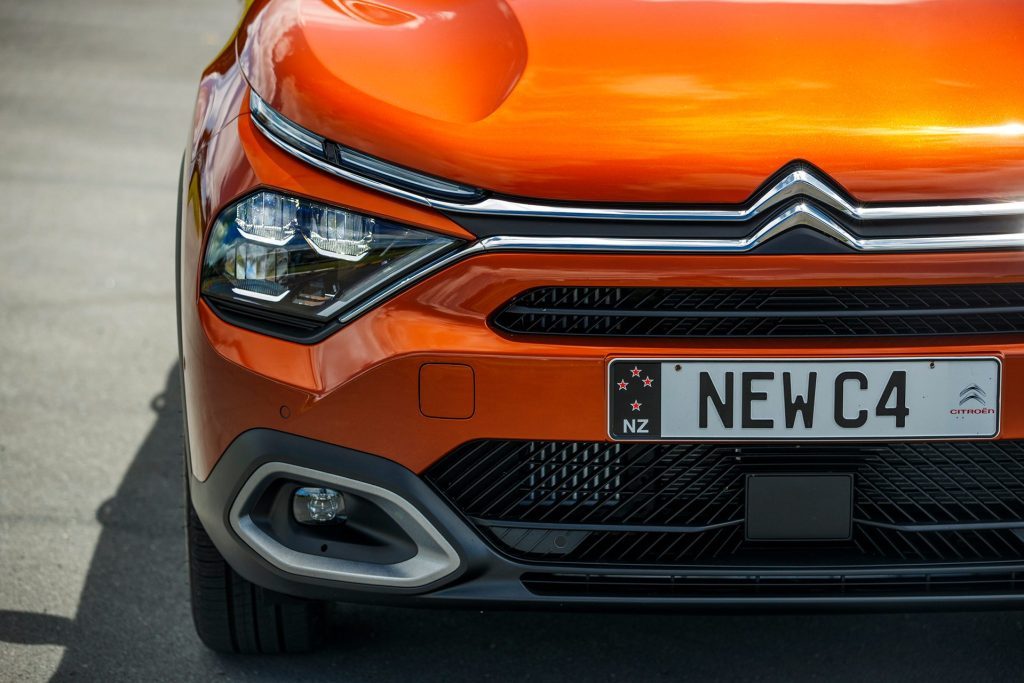
Move inside – watch your head on entering – and there are digital instruments with no clear sign of a tacho. It took us half a day to find the thing, turning up when scrolling through the trip computer on the end of the indicator wand. Even then it’s just a small digital readout, like on many cruiser style bikes. It’s all you need though, and it shows the engine, PSA’s grunty and gruff (if somewhat laggy) 1.2 turbo triple, is into its stride by 1500rpm in town, and working well between 2000 and 3500rpm out on rural highways. Gearing is high in top too, eighth, around 1600rpm at the legal road speed. Taking it easy on the motorway and you’ll see fuel use in the fours.
We mostly used the middling Normal drive mode, one of three, because it gets the job done, n’est ce pas? Don’t bother with Eco unless you like to drive something that feels like there’s a potato jammed up your exhaust pipe. Sport though is well sorted, not overly dramatic as many tend to be. But then this isn’t really an especially sporty thing to drive which, to my mind, is kind of refreshing. Too many new vehicles, SUVs especially, attempt to ace the bends and in doing so roger the ride. So to encounter a family-oriented machine that makes comfort the number one priority is unusual, to say the least.
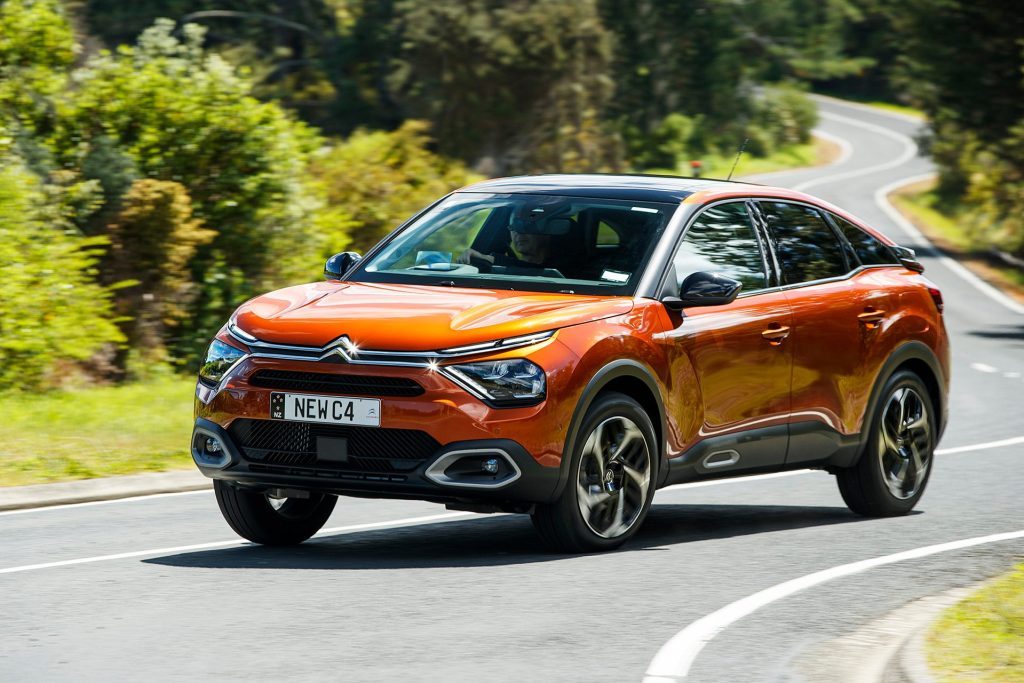
But then Citroen has always emphasised the importance of comfort, from as far back as the DS through CX, XM and Xantia, all using expensive and trouble-prone hydropneumatic suspension. Cushy admittedly but Citroen has reverted to more conventional suspension units, only they’re still different. Progressive Hydraulic Cushions were developed for the C3 WRC car and, because the technology is relatively straightforward and conventional, making it cost effective, it can be applied to vehicles of all sizes.
Instead of having mechanical stops, like with conventional shockers, this has two hydraulic stops, one for compression, the other for rebound. They work together to slow down the action of the shock, dissipating energy as heat instead of transmitting remaining energy into the body, as with conventional shocks when they rebound. The concept then is that the shock absorber returns to its neutral position in a more progressive manner, delivering what Citroen calls a “flying carpet” ride.
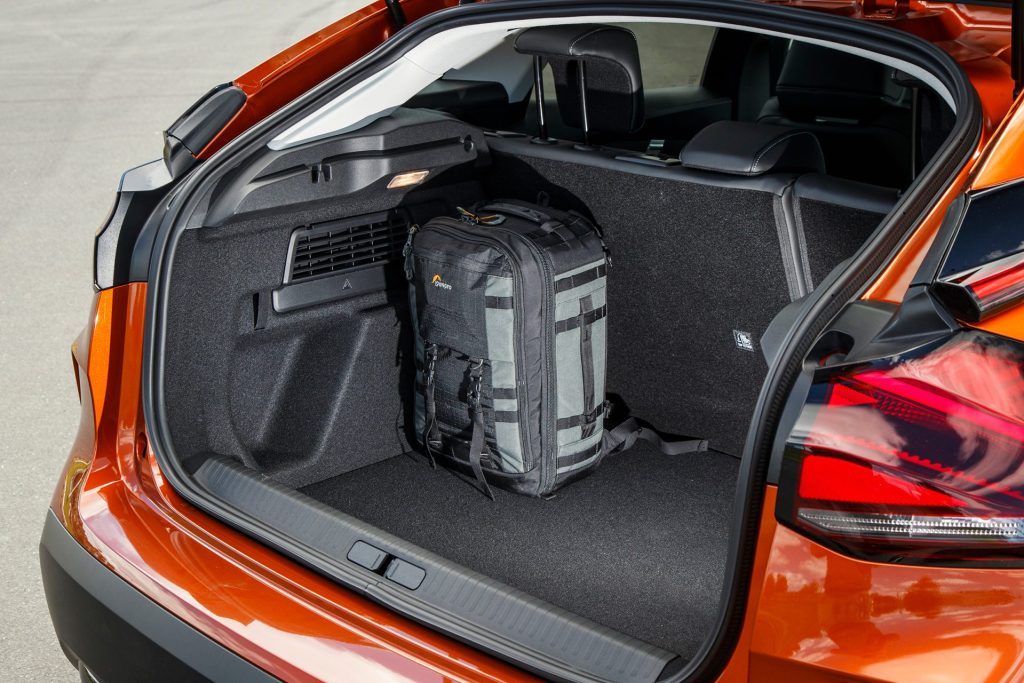
And does it deliver that? Well, yes, largely. The 60 profile tyres probably contribute to the smooth, absorptive ride and so too the really well cushioned seats. The squab is a bit uptilted but raising the seat slightly negates that and makes for a decent enough driving position. We like the wheel shape, flattened top and bottom.
In town this takes speed bumps beautifully while out of town it deals to dips and bumps with equal disdain. That said, it’s not without some thump-bump over sharper midcorner irregularities, and naturally its soft demeanour has some impact on how it deals to corners. While some of the easy-to-uncover understeer you might well attribute to the rubber which is Goodyear EfficientGrip, such tyres have improved over the years, and there’s a moderate amount of roll too so ESP warnings and intervention apply earlier than the norm. But no rival rides as plush so just ease back a little, relax and enjoy the comfort that is so often not part and parcel of modern day family drives.
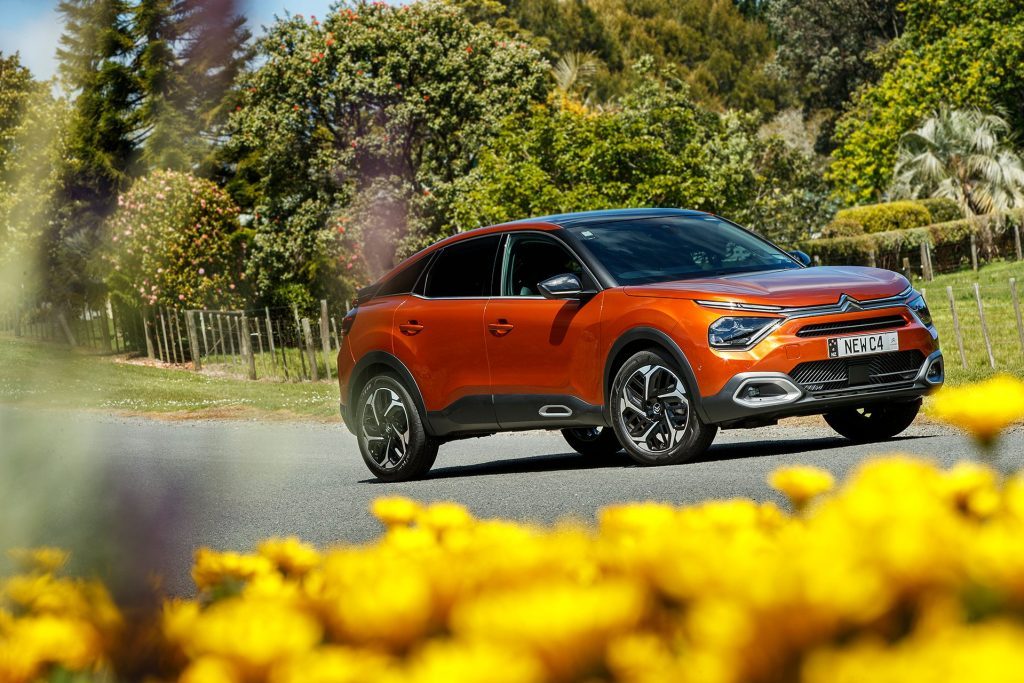
It’s reasonably quiet too, all SPL readings in the low 73dB area, and practical with 380-1250L of luggage capacity. Moreover, it’s got most of what you might want in a $40k vehicle, including active cruise control, a head-up display with traffic sign recognition, safety bits like lane keeping, AEB and blind spot monitoring, along with LED lights, dual-zone air, and smartphone compatibility. Kit enough that there’s not much in the way of options. A pana roof for $2.5k and powered driver’s seat – best sit for this – adding $3k. A three-year service plan is $1.6k, while colours other than white are $550-$950. Warranty extends for five years/100,000km.
Don’t want gas? You can always opt for the e-power version although that won’t be here until around this time next year, possibly a bit earlier. There is no spec data available as yet but the e-car will carry a significant premium, likely 50 per cent, on the existing petrol C4.
| Model | Citroen C4 |
| Price | $39,990 |
| Engine | 1199cc, IL3, T, DI |
| Power | 114kW/240Nm |
| Drivetrain | 8-speed automatic, FWD |
| Fuel Use | 6.1L/100km |
| C02 Output | 138g/km |
| 0-100km/h | 8.70sec |
| Weight | 1267kg |


